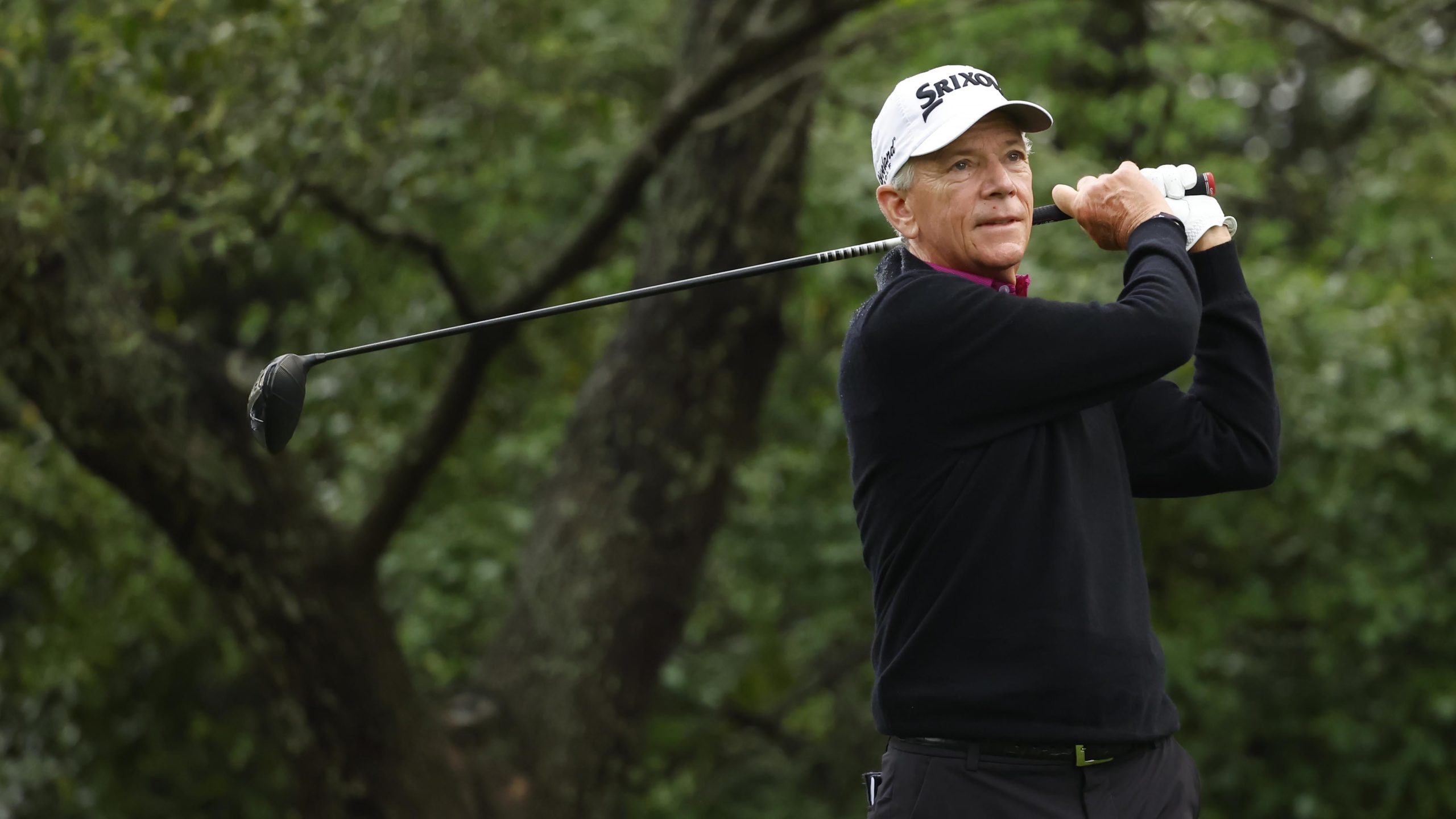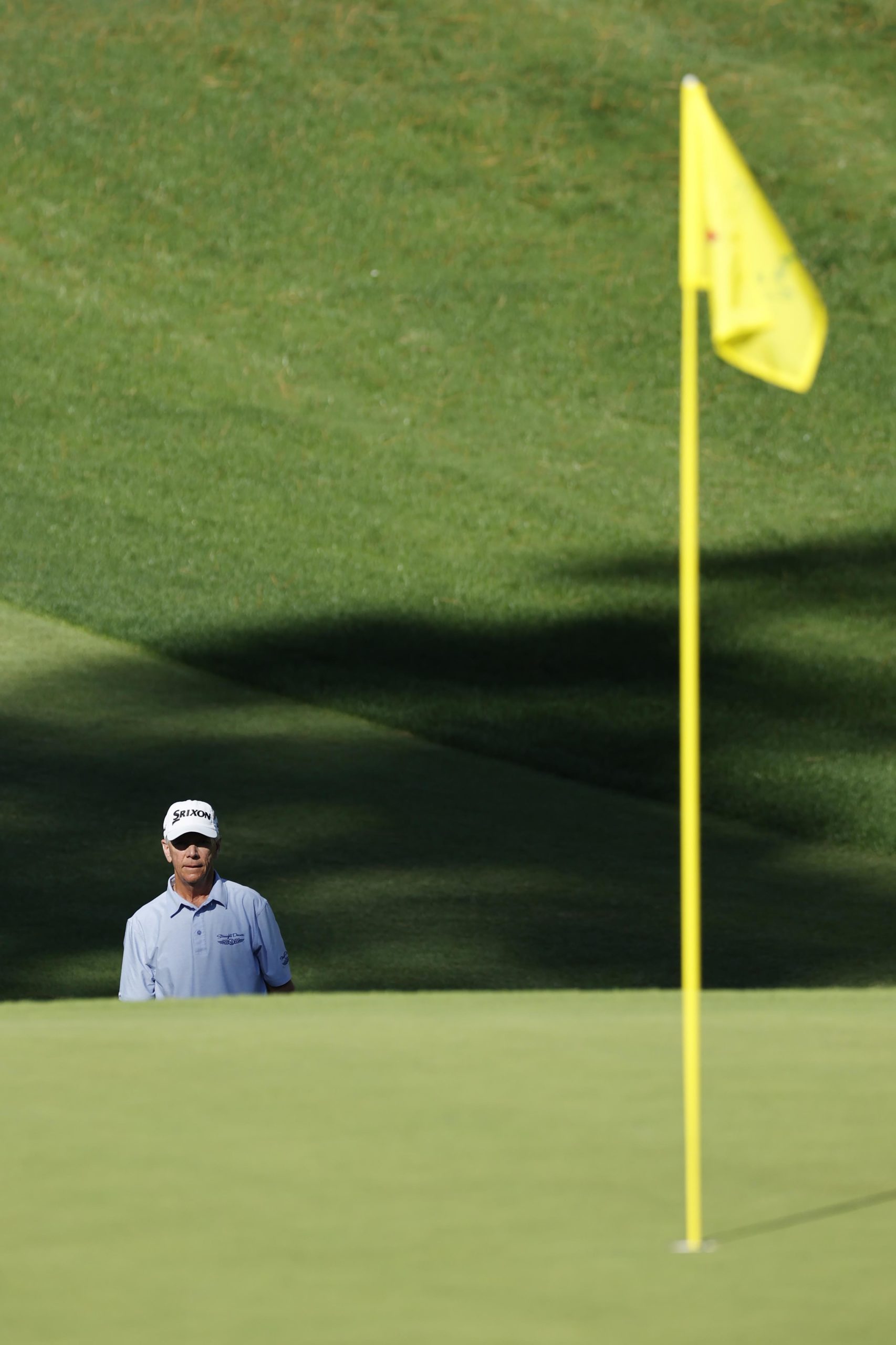There are different schools of thought about the inclusion of all able-bodied past winners in the Masters Tournament. On the one hand, players like 56-year-old José María Olazábal and 64-year-old Sandy Lyle are no longer competitive at Augusta National. Their presence is one reason the Masters has the weakest field of the four major championships in men’s golf. On the other hand, it’s always a treat when an aging maestro makes a run, as Fred Couples and Tom Watson both did in 2010. Couples was 50 at the time; Watson, 60.
Another benefit of the past-winner contingent has become clear in the past four years, with the availability of every-shot coverage on Masters.com. Maybe it’s just me, but I love watching older players negotiate a course that they’re intimately familiar with but have lost the ability to overpower. Today’s Augusta National stretches to 7,510 yards, far too long even for Champions Tour full-timers like Bernhard Langer and Mike Weir. But no golfer who has won a green jacket is unresourceful. Like Cristiano Ronaldo figuring out how to score without his youthful speed, or Vince Carter evolving into a crafty sixth man, the most senior players in the Masters field often find ingenious ways to break 80.
My favorite current practitioner of this art is Larry Mize, three and a half decades removed from that chip-in. Mize hasn’t made a Masters cut since 2017, and this week he was 11 over after 36 holes, but if you watch his first and second rounds from the 2022 tournament shot by shot, you’ll see how precise and disciplined he had to be just to post 77-78. And check out some of the players Mize beat: Thomas Pieters, Matthew Wolff, and—to the delight of Golf Twitter—Bryson DeChambeau, all of whom can leverage the full potential of the modern driver. Not bad for a 63-year-old who averages about 245 yards off the tee.

Courtesy of the Masters Tournament
So in honor of the ’87 Masters champion’s efforts on Thursday and Friday, and because there’s a lot to learn from how he bunts his way around a big ballpark, here are what I consider the five main virtues of Larry Mize’s sexagenarian golf game:
Tempo, tempo, tempo
There are those who lash at the ball and those who flow through it. Arnold Palmer and Bryson DeChambeau belong to the former group, Mize to the latter. He starts with a simple trigger—his right knee twitching slightly forward—and from there, he maintains a steady, unhurried rhythm from takeaway to finish. It’s a swing from another era, and a pleasure to watch.
Well-struck, tactically sound hybrids and fairway woods
I haven’t confirmed this stat, but I feel confident in saying that Larry Mize hit more hybrids and fairway woods than anyone in the Masters field in rounds one and two. He had a hybrid or fairway wood on his second shot on 14 of the 20 par 4s he faced. On Friday, he hit fairway wood off the deck nine times. This is one of the main senses in which Mize played a different game than 95 percent of his competitors this week. Longer PGA Tour pros hardly hit hybrid or fairway wood at Augusta National at all, let alone on par 4s. Mize does so frequently, and he strikes these shots beautifully.
But the key to his hybrid and fairway-wood game is that he doesn’t ask too much of the clubs. He knows they won’t produce iron-like precision, so he doesn’t aim at iron-grade targets. Consider how he approached the first hole on Thursday and Friday. He probably could have reached the pins with a fairway wood, but he would have risked getting stranded above the hole or over the back. So instead he ran a hybrid toward the large, open front of the green. This strategy produced two pars—a two-putt in the first round and an up-and-down in the second—on one of the hardest holes on the course.
Impeccably judged lag putts
Hitting hybrids and fairway woods into most greens at Augusta National means facing a lot of what Ben Crenshaw calls “approach putts.” These are in Mize’s wheelhouse. From a relaxed, almost slumped posture, using a simple Anser-style blade, he puts the right pace on his lags almost every time. Particularly memorable this week was his 50-footer from the middle of the sixth green to a pin on the back-right knob. It’s rare for players to find the correct speed here, but Mize made it look routine.

Courtesy of the Masters Tournament
Conservative tactics, confident execution
Alister MacKenzie, the architect behind Augusta National, meant for his long holes to provide different routes for different types of players. For instance, on the 13th hole at Augusta National, there’s a direct line along the tributary of Rae’s Creek that gives the aggressive golfer the best possible chance to reach the green in two. A more conservative—or simply shorter-hitting—player can plod along the high right side of the corridor and get home in three shots without much fuss. But here’s the fun part: if the plodder happens to be a hell of a wedge player, he may win the hole off of an opponent who takes the tiger line and doesn’t execute.
On Thursday and Friday at the Masters, Mize steered his first two shots on No. 13 well right, as far away from the water as possible. Both times, he hit crisp approaches that gave him birdie looks—a near tap-in on Thursday, and a flattish 22-footer on Friday that he left hanging on the edge of the cup. This is a microcosm of Mize’s overall M.O. at Augusta National. He plays away from the hazards that guard the high-risk, high-reward routes on the long holes because he has confidence in his abilities from 100 yards and in.
A disinclination to make double bogeys
Big-number avoidance is one of golf’s occult skills. It draws on every aspect of the game, including the strategic and mental, and there may be nothing more scientifically rigorous to say about it than some players just have a knack for it.
Through 35 holes at the 2022 Masters, Larry Mize recorded no scores worse than bogey. (Incidentally, he also had just one score better than par, which proved his undoing this week.) When he needed a good shot, he came up with one. He holed three 13-footers in a row during a remarkable stretch in the middle of his second round, saving par, bogey, and par on Nos. 10, 11, and 12.
Sadly, Mize’s high-wire act came to an end on his last hole of the tournament. He blocked his drive on the par-4 18th into the trees, punched out into a fairway bunker, clipped the lip of the bunker on his recovery, and spun a three-quarter wedge off the front of the green. He had a 50-foot chip left, and he had to hole it to keep his double-bogey-less streak alive. Realistically, though, he was looking at a 6, maybe a 7.
Reader, the ball bounced off the pin.


 by
by 
